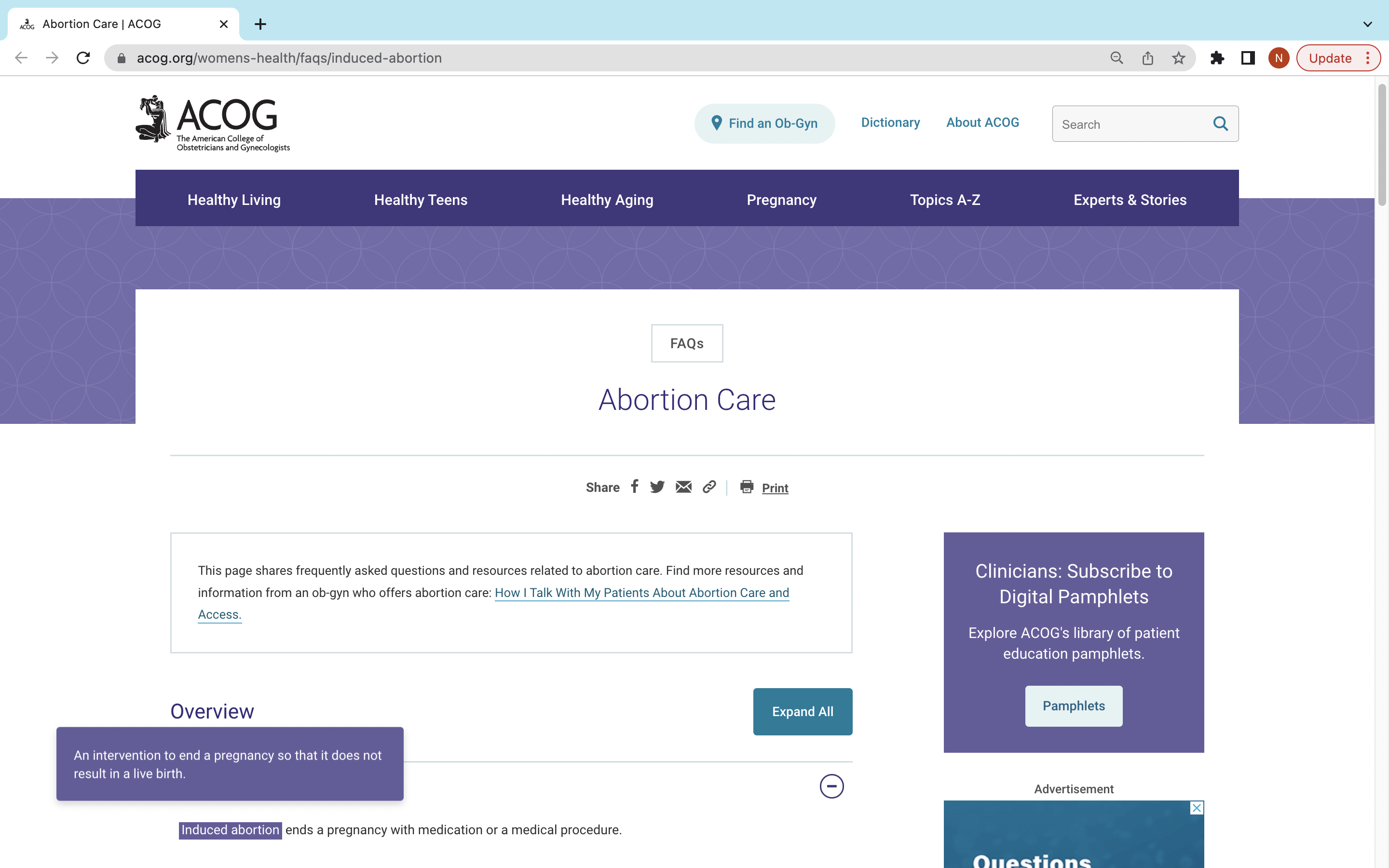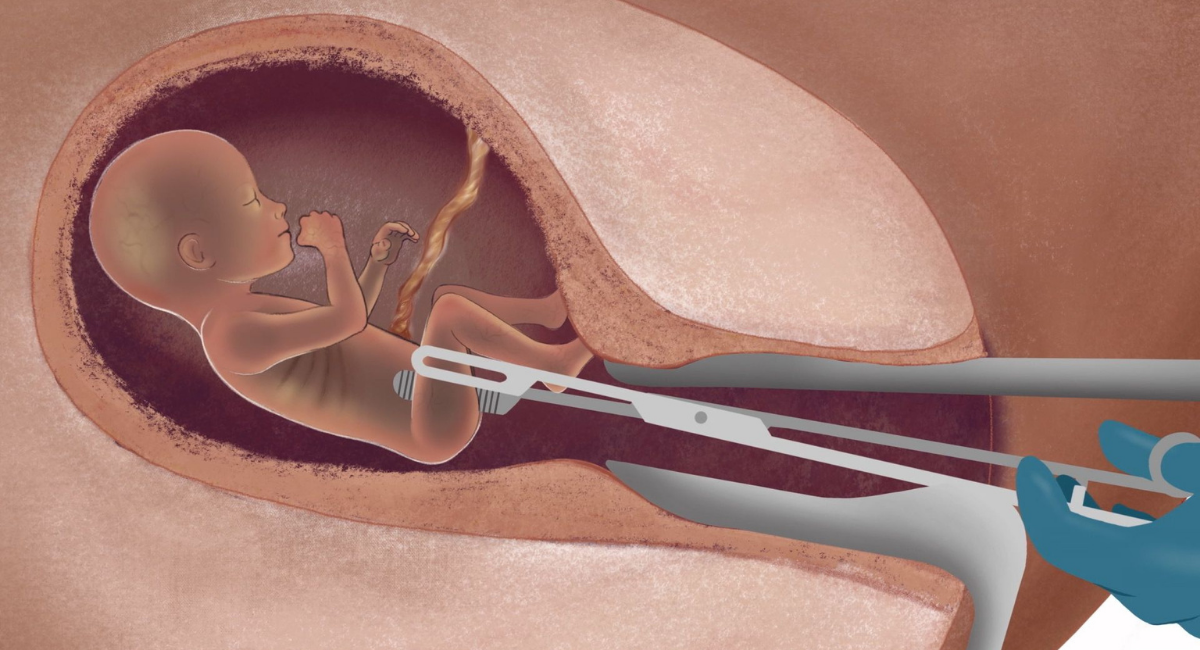According to FactCheck.org, abortion is “sometimes medically necessary” in “life-threatening complications” despite “Facebook posts claiming otherwise.” The article attempts to paint social media posts from Live Action — in which medical professionals discuss why induced abortion is never medically necessary — as inaccurate, but the fact-check is ultimately unsound.
FactCheck.org’s claim
FactCheck.org wrote, “[A] Facebook post from the anti-abortion organization Live Action says, ‘Abortion is NEVER medically necessary.’ The post includes a video by neonatologist Kendra Kolb saying that even in high-risk situations, ‘there is no medical reason why the life of the child must be directly and intentionally ended with an abortion procedure.'”
It also makes note of a shared post from Dr. Christina Francis, chairman of the board of the American Association of Pro-Life Obstetricians and Gynecologists (AAPLOG), in which she states that the intent of an induced abortion is to “produce a dead baby.” Francis clarifies that a dead baby is “not the intent when we intervene to save a woman’s life…”
Both doctors state that preterm delivery is the procedure used during high-risk pregnancies and emergency situations to save a woman’s life. However, FactCheck.org argues that such comments are misleading.
“Early delivery… suggests the fetus is developed enough to survive outside the womb… and many conditions … necessitate the termination of a pregnancy before that point,” the organization wrote.
Yet the term “early delivery” in no way implies that a child will survive. It is, in fact, an obvious and well-known fact that not all prematurely delivered babies survive.
As Live Action and Live Action News — along with many medical professionals — have explained for years, the difference here is in the intent of the procedure, not necessarily the ultimate outcome.
Accidental death and intentional killing are not the same even though the end result (death) is the same; likewise, an early delivery resulting in the unintentional demise of a very premature child is not the same as induced abortion in which killing the child is the intent and goal.
One that intentionally kills a child through direct action or intentional neglect with the goal of a deceased child is an induced abortion; one that delivers a child with the intent to save the mother’s life — not to ensure the child’s death — is not an induced abortion.
Preterm delivery explained
Preterm delivery — whether vaginally or by c-section — never offers the guarantee that the child will survive outside the womb. The very fact that these births are called pre-term is evidence of that. “Pre-term” means before full-term, when babies aren’t fully ready to survive on their own outside of the womb. Some will survive, and some won’t.
Likewise, some medical situations do “necessitate the termination of a pregnancy” before a child is capable of surviving outside the womb. However, “termination of a pregnancy” does not necessarily refer to an induced abortion — though the media makes it appear that way. A pregnancy also ends when a child is born — during a vaginal delivery, emergency delivery, or a c-section.
Therefore, as Dr. Francis and Dr. Kolb explained, if a woman is facing a health emergency during pregnancy and the pregnancy must end, the child does not have to be intentionally killed by an induced abortion. As the doctors stated, there is a key difference between induced abortion and preterm deliveries. There is a difference between “terminating a pregnancy” and deliberately killing a preborn child.
What is an abortion?
Medically speaking, abortion is often called the “termination of a pregnancy” or “expulsion of a human fetus.” Miscarriage is often referred to as a “spontaneous abortion.” No government could outlaw miscarriage or preterm labor — they occur naturally. However, the government can outlaw intentional killing.
Legally speaking, that is exactly what induced abortion is: the “act of using or prescribing an instrument, a drug, a medicine, or any other substance, device, or means with the intent to cause the death of an unborn child.” The intent of an induced abortion is to ensure the baby is dead upon delivery. Emergency c-sections and induced preterm delivery to save a woman’s life do not carry the intent to kill the child.
Guidance published by Dr. Jeffrey Wright in Issues in Law and Medicine attempts to clarify the difference:
When a pregnancy is located outside the uterine cavity, when a fetus has already died, or when a fetus never formed, physicians typically have not thought of the treatment for these conditions being an abortion.
Miscarriage or fetal death can sometimes occur as a complication or side effect of medical or surgical treatments such as appendectomy, removal of ovarian cysts, cervical cone biopsy, chemotherapy, radiotherapy, hysterectomy for malignancy, etc. These unintended consequences are not thought of as an abortion.
Fetal death can sometimes occur as a complication of an intrauterine surgical procedure to treat a single fetus or to treat an abnormality such as twin to twin transfusion syndrome. Again, those occurrences are not viewed as abortions.
When a condition arises in pregnancy such as severe hemorrhage, uterine infection, or severely elevated blood pressure, some physicians might consider the procedures to end those pregnancies to be an abortion. However, they do not con- sider those procedures to be elective. They do not consider that type of pregnancy termination to be avoidable. Rather, they consider those procedures to be medically necessary procedures to save the life of one of the two patients that they are treating.
In those cases, the loss of the fetal life is a byproduct of the medical treatment necessary to save the life of the mother. This type abortion is ethically, medically, and morally distinct from an elective abortion that is done for social or economic reasons involving an otherwise healthy mother and fetus.
This difference is vital to understanding pro-life laws, and realizing that these laws only prohibit the intentional and direct killing of the child inside the womb. Yet, even some doctors seem confused.
Pro-life law language
FactCheck.org quotes the pro-abortion American College of Obstetricians and Gynecologists (ACOG), which said, “Health care professionals should never have to navigate vague legal or statutory language to determine whether the law allows them to exercise their professional judgment and provide evidence-based care.”
On its website, however, ACOG makes it clear it knows the difference between medical treatments and induced abortion, defining an “induced abortion” as “an intervention to end a pregnancy so that it does not result in a live birth.” (emphasis added)

ACOG website screenshot “induced abortion” – 7/20/22
Since ACOG is the “premier professional membership organization for obstetrician-gynecologists,” it would make sense that its 60,000 members are all aware of this.
Pro-life laws are clear that treatments for ectopic pregnancy, miscarriage, and emergencies are not induced abortions and therefore are not prohibited.
No medical conditions require killing
FactCheck.org claims specific conditions require induced abortion — the direct and intentional killing of the child. This is inaccurate.
In an ectopic pregnancy, in which the embryo has implanted outside the uterus posing a threat to the mother’s life with no chance of the child surviving, the surgery carried out to remove the embryo is not considered an induced abortion — because the doctor is not actively killing the child; the intent is not to kill but to save the mother’s life, which is at immediate risk. Pro-life laws (read here) state this clearly.
FactCheck.org also writes, “Other life-threatening conditions clearly require abortion, physicians said. Placental abruption, a condition in which the placenta separates from the wall of the uterus, can lead to ‘massive hemorrhage’ that can only be stopped by ending a pregnancy, Dr. Melissa Simon, vice chair for research in the OB-GYN department at Northwestern University’s Feinberg School of Medicine, told us in an email.”
Yet Simon doesn’t appear to say the hemorrhage can only be stopped by “induced abortion,” but “by ending the pregnancy.” Again, words and definitions matter. The pregnancy can be ended by preterm delivery, which is not an abortion and is not prohibited.
As the American Association of Pro-Life Obstetricians and Gynecologists (AAPLOG) explains, situations including “massive placental abruption” require “artificial separation” of the mother and child — which means induced labor, regardless of gestational age. There is no need to intentionally kill the child.
An abortion in the second trimester typically requires the insertion of instruments the doctor would use to dismember the baby (a D&E procedure), pulling her out of the womb in pieces. An induction abortion in the third trimester would require the insertion of a needle through the mother’s abdomen to inject the baby with digoxin to cause cardiac arrest… and then they would have to wait for the baby to die before delivery.
Neither of these saves time when a woman is hemorrhaging, yet both ensure the baby is dead. The way to ‘end a pregnancy’ during such an emergency is clearly not by taking the time to kill the child.
As Mayo Clinic explains, if the placental abruption is so severe it “jeopardizes your or your baby’s health, you’ll need an immediate delivery — usually by c-section.” These procedures will “end the pregnancy” but the baby is not directly and intentionally killed, and therefore these deliveries are not induced abortions.
FactCheck.org also claimed that pre-eclampsia requires abortion. Dr. Iffath A. Hoskins, president of the pro-abortion ACOG, told FactCheck.org that preeclampsia “and other illnesses can severely compromise health. They can cause death. In some situations, abortion is the only medical intervention that can preserve a patient’s health or save their life.”
However, according to the Cleveland Clinic, pre-eclampsia “typically goes away after your baby is delivered.” Treatment includes close monitoring, medications to help the baby’s lungs develop, and medications to help manage blood pressure. A hospital stay may be required and an emergency delivery or C-section may also be necessary. “Sometimes it is safer to deliver the baby early than to risk prolonging the pregnancy,” said Cleveland Clinic, which never mentions abortion as a treatment for pre-eclampsia.
There are medical conditions that arise during pregnancy that can cause death, and ending the pregnancy may be necessary. However, induced abortion (directly and intentionally killing the baby in the womb) as a way to end the pregnancy is never necessary.
Some abortionists, like Don Sloan, have even admitted that the idea of abortion to save a woman’s life is not an honest medical claim:
If a woman with a serious illness – heart disease, say, or diabetes – gets pregnant, the abortion procedure may be as dangerous for her as going through pregnancy… with diseases like lupus, multiple sclerosis, even breast cancer, the chance that pregnancy will make the disease worse is no greater that the chance that the disease will either stay the same or improve. And medical technology has advanced to a point where even women with diabetes and kidney disease can be seen through a pregnancy safely by a doctor who knows what he’s doing….
He adds, “The idea of abortion to save the mothers’ life is something that people cling to because it sounds noble and pure – but medically speaking, it probably doesn’t exist. It’s a real stretch of our thinking.”








